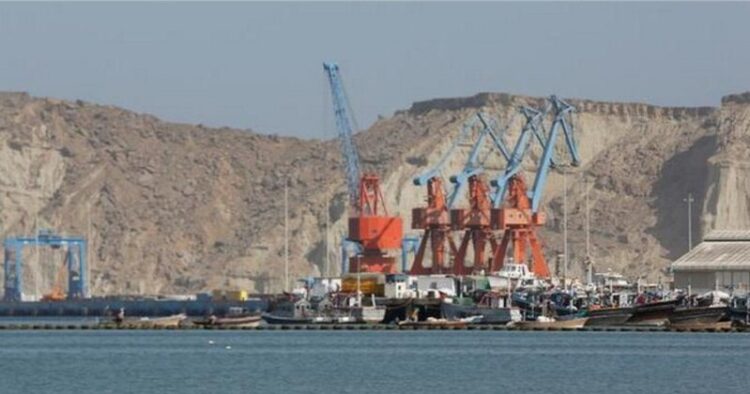Pakistan has refused to approve the Mainline-I (ML-I) railway project of the China-Pakistan Economic Corridor (CPEC) worth $6.7 billion terming it as unviable. The changed design and reduction in speed of trains from 160 km per hour to 120 km per hour have all contributed to this. Initially, the ML-I project was estimated to cost over $20 billion and was to be the most important strategic component of CPEC.
The Karachi-Peshawar Rail Line is the main passenger and freight line of Pakistan and called ML-I in CPEC documents. It handles 75 per cent of the country’s cargo and there is also massive passenger traffic on this line. Various sections of the ML-I line were built during the British period with the oldest section dating back to 1861 and another section opening in 1883.
The first phase of the ML-I project was unveiled in early 2015 and expected to be completed by the end of 2017. There were plans to expand and reconstruct the ML-I line to be funded by Chinese loans as part of CPEC. The plan involved doubling of the track from Karachi to Peshawar and employing the latest technologies to improve efficiencies.
The second phase of the project was expected to be completed in late 2021. However, reports in most Pakistani newspapers in January 2022 suggested that there was no funding plan in place as the Chinese were reluctant to provide capital for it. In May 2024, it has not started and the refusal of the Pakistani authorities now to approve a grossly modified project means a serious setback.
Incidentally, one of the main compromises in design has been to do away with fence along the railway tracks. While the Chinese side has said that this was necessary to reduce the project cost, Pakistani officials said this will increase the chances of accidents substantially, causing repeated disruptions. The positions adopted by the two sides are deemed to be such that they cannot be bridged, according to experts.
A couple of years ago, the Chinese had asked Pakistan to reduce the cost of the project to less than one-third of the original and put it at $6.8 billion. The drastic changes in the design, reducing the speed of the trains and other cost cutting measures have made the project unviable, according to Planning Commission of Pakistan, a report in The Express Tribune said.
The Planning Commission authorities believe that $6.8 billion will be spent on merely rehabilitating the existing track due to design changes proposed by the Chinese. Being very old, the entire railway line is in a bad shape and many fatal accidents have taken place on the ML-I track over the years regularly, they pointed out.
China has refused to provide capital, loans, and the requisite technology for the project saying Pakistan can’t afford them. The weak financial health of Pakistan is a serious deterrent for Beijing as it watches keenly the new IMF loans. In other words, China is saying that Pakistan will not be in a position to pay back its loans. This also is the reason several other CPEC projects are languishing and running behind schedules by years altogether.
The original ML-I track is 1,872 kilometres long, but some of it may be kept outside the track rehabilitation programme proposed by Pakistan’s Ministry of Railways. If Pakistan could have its way, it would be financed under the CPEC framework agreement at a ratio of 85:15 cost sharing between China and Pakistan. For its share of 15 per cent also, Pakistan wanted China to provide a loan of $2.4 billion and it submitted an application in early 2020. However, the Chinese did not respond to this loan request indicating it wanted Pakistan to look elsewhere.
Some other projects to be executed in the second phase of CPEC are also facing problems and a Pakistani delegation is presently in Beijing to sort out issues. Planning Minister of Pakistan Ahsan Iqbal was heading the delegation which is trying to revive two hydropower projects of over 1,800 MW capacity. These projects are Kohala and Azad Pattan projects both of which are located on the Jhelum river. The Kohala project is of 1,124 (281×4) and the Azad Pattan project is of 700 MW capacity.
The Kohala project is estimated to cost $2.4 billion and the Azad Pattan project $1.5 billion. Some Chinese companies were to execute these projects but several issues have cropped up and these projects have got stalled and delayed interminably. The Pakistani government owes over $1.9 billion to existing power producers, which too are Chinese companies. The recovery and settlement of these arrears is now a priority for the Chinese officials who are not willing to invest another $3.9 billion into Kohala and Azad Pattan projects.
The two hydropower projects are part of what was called Green Corridor which was announced by Vice Premier of China He Lifeng during his visit to Pakistan some months ago. Many of the CPEC projects were signed when Imran Khan was the Prime Minister of Pakistan. However, Prime Minister Shehbaz Sharif is keen to revive the original momentum of the CPEC projects, according to Pakistani officials.
The energy projects taken up by various Chinese companies in the first phase of CPEC had helped Pakistan overcome power outages. In the second phase, the Pakistan government wants to diversify towards clean and renewable energy, according to Pakistani officials visiting China.



















Comments